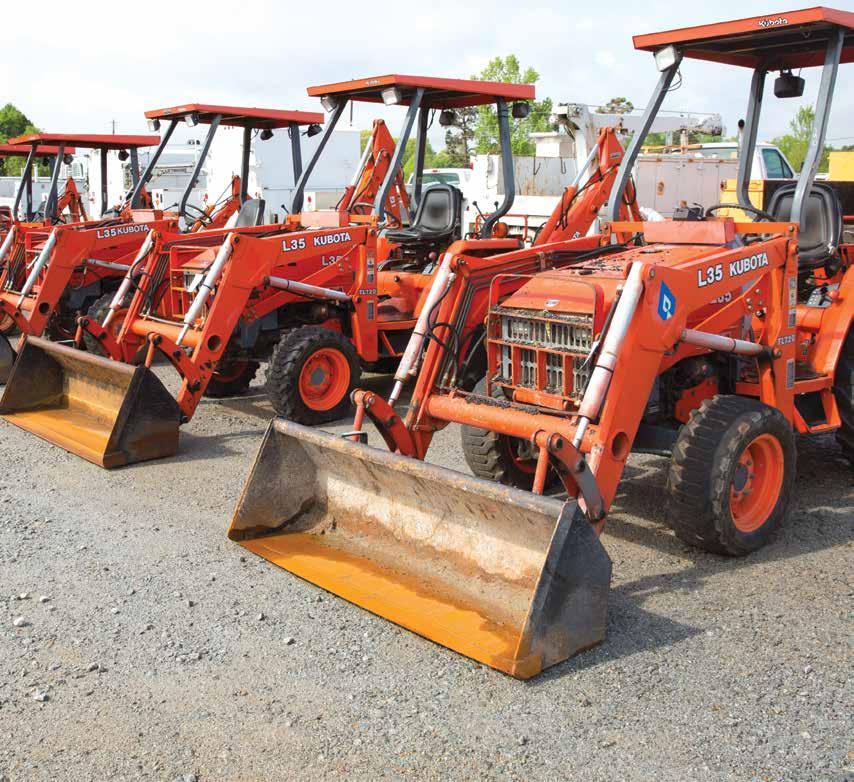
5 minute read
FEATURE ARTICLE
HOW TO EVALUATE USED EQUIPMENT ONLINE
Some of you may be apprehensive about buying equipment during COVID-19 — and that’s understandable. The desire to avoid face-to-face contact, plus varying state travel restrictions, can make it tricky. It’s one reason why online purchases, which have been on the rise for years, have boomed in 2020. Pair that with contractors increasingly looking for more affordable options, and you can see the opportunity that’s there for online used equipment purchases.
Advertisement
The automobile industry is already seeing an uptick. According to a recent Wall Street Journal article, “used [car] sales actually exceed pre-pandemic levels by approximately 20%.” Used machine sales are likely to rise as well.
Even before the pandemic took hold, more and more contractors were buying used equipment online, and in our fast-paced world, online equipment transactions will increasingly become the norm, with customer preference given to those who provide the most convenient and streamlined process. In fact, the recent outbreak of COVID-19 has completely changed how used equipment companies interact with customers. While buyers used to travel to inspect machines, travel restrictions and health concerns now make this less common. Companies can take advantage of this shift by adapting how they offer their products. At Volvo, they do this by offering Certified Used and Inspected Used machines. Both are advertised online with a guaranteed inspection report, eliminating the need for customers to travel onsite to inspect machines. continued on page 28
continued from page 26

TIPS TO BUY USED EQUIPMENT ONLINE To help you feel more confident with inspecting and purchasing used construction equipment online, here are some tips to help you properly evaluate used equipment when you can’t evaluate machines in person — these tips apply no matter where you intend to buy.
1) Always know your equipment seller. Large dealers and OEMs usually have inventory in different states, so the right machine may not always be close by. When evaluating machines that aren’t nearby, know the seller and do business with companies that can knowledgeably speak about the machine and its condition, plus provide you any other requested information in a timely manner. The best advice is to restrict your online purchases to sellers that can be verified and who have a solid reputation.
2) Start with an inspection report. You should always understand the quality of the machine within your budget. While there are nice, clean, high-hour machines, lower budgets require older machines with more hours, and the likelihood of major component failure and other issues naturally increases. Inspection reports can give you real insight, and whether there are several items on the report or just one. Try to find out why they weren’t repaired. 3) Ask for a repair quote. There are two main reasons a seller hasn’t repaired something: 1) the cost was too expensive or 2) the seller didn’t want to invest more into the machine than they had to. Both are understandable, but you have to make sure the price of the machine is consistent with its present condition.
4) Request all service records and oil samples. If service records can’t be provided by the seller, give the serial number to an OEM dealer and request they give you the records. Most OEM dealer service departments are more than willing to assist. When it applies, oil samples are critical because they give you the internal vitals of the power train.
5) Assess the wear components on the machine. Anything that moves has the potential to fail. Major components cost the most to replace or rebuild, but there are times when the smaller repairs can eat up the budget faster. For example, having to replace a seat belt, wiring harness, a set of steps or fenders usually isn’t a big issue. However, if all four need to be replaced, you can easily spend close to $10,000.
6) Look at the sheet metal, the paint and the undercarriage and request a video of the machine operating. Look at the age and hours of the machine. Machines that are hammered usually give themselves away through the cosmetics (dents,
REAL STONE REAL STYLE
Flagstone Wallstone Outcropping Boulders Chunks Step Treads (Sawn, Snapped, Irregular) Travertine Natural Stone Veneer Barnstone Decorative Gravel

REAL STONE REAL STYLE

ADDRESS: 9718 AVON LAKE RD, LODI, OH 44254 PHONE: (330) 948-1006 EMAIL: DOUG.FRANKBROS@GMAIL.COM WWW.FRANKBROTHERS.COM
scrapes, etc.). Pay close attention to the paint as well. It isn’t uncommon to see used machines repainted. You just need to know the difference between painting to clean up and painting to hide. There are certain signs of the paint job that can give you clues. If you can’t tell the condition of the paint job with the online photos and video, ask the seller to send you close-ups of areas you think look questionable.
Quality paint jobs meant to clean up a machine give an honest presentation that shows someone took pride in their machine or that they simply wanted to further represent that the machine is in good shape for its age/hours. Paint jobs with runs, flakes, the wrong color or incorrectly painted items indicate a rush job, the desire to hide something or simply that the owner didn’t know what he was doing. Either way, if a bad paint job is detected, proceed with extreme caution.
7) Get a guaranteed condition report. If a company doesn’t offer a guaranteed condition report, it’s recommend that you travel onsite and inspect the machine, when possible.
8) Request a virtual walk around. Virtual walkarounds are becoming more popular, and if done right, can actually provide the visual information you need to make a wellinformed decision about a piece of used equipment. Most virtual walkarounds use recorded video. Many dealers offer this service to customers. The process starts with a specific visual request by the customer. Some use video calling or prerecorded video and physically walk around the machine and address each specific item. Other companies use software that allows sellers to connect potential buyers with a certified facility technician, who will conduct the workaround. This process involves the seller sending a connection link via text to both parties and then the seller physically records the walkaround (if requested) while the buyer watches via their cell phone.
IN CLOSING Down the road, technology will change how sellers interact and represent equipment to customers. The current pandemic has created this opportunity. In the end, customers have to be able to trust the process and the product.
This article was written by Jared Haughton, Product & Sales Manager, Used Equipment for Volvo CE. Jared grew up in the used equipment business, first with his father’s company and now with Volvo CE. This article appeared on the Volvo Construction Equipment blog, located at https://volvoceblog.com/equipment/used-equipment.






